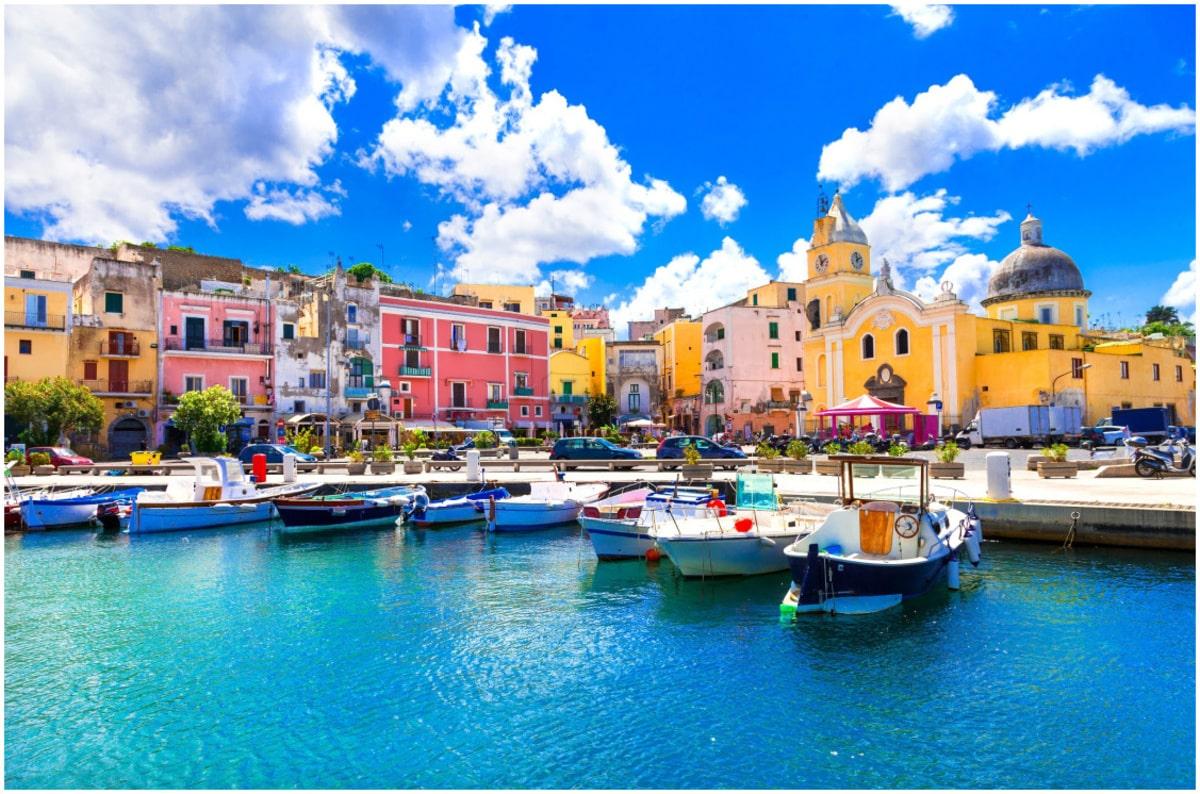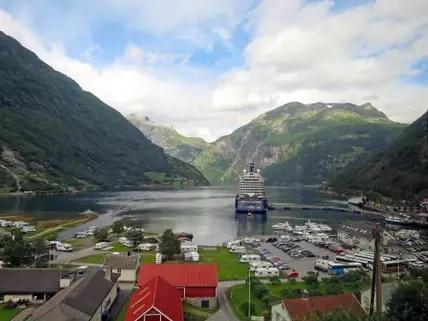Going on holiday to Italy in winter is an excellent option for avoiding the crowds, but which city is the warmest for enjoying the Mediterranean, walking through the charming little Italian streets and, above all, soaking up the sun?
So if for any reason you're planning a winter holiday and want to make the most of the sun, the fresh air and the soft, sensual breezes, Italy is one of the best destinations in the world.
In this article you'll find answers to your many questions: what's the weather like in Italy in winter? Which is the hottest city in Italy in winter? What to do in Italy in December or January?
Italy is renowned for its warm and welcoming Mediterranean climate, but this is not a rule that applies to all cities.
In fact, temperatures between the coldest and warmest cities in the country differ by as much as 10°C (50°F). That's a big difference when it comes to perfecting your tan.
The average weather in Italy varies from sub-zero to scorching hot, with August being the hottest month. In fact, a recent record temperature of 48.8°C (119.8°F) was recorded near Syracuse this year in August 2021.
Unsurprisingly, the hottest places in Italy are in the south of the country, but this is not always the case.
Weather in Italy in winter
It goes without saying that different regions offer different weather conditions.
While average highs in many northern Italian cities in winter can be between 0°C and 8°C (32°F and 50°F), temperatures in the southern part of the country can reach 15°C (59°F).
Some days can be sunny and others rainy or snowy, so it's best to check the forecast for a specific destination.
Average temperature ranges for the different regions of Italy in January:
Northern Italy: -4 to -5 C / 25 to 45 F
Central Italy: 5 to 13 C / 40 to 55 F
Southern Italy: 10 to 16 C / 50 to 60 F
Continue reading with : Cinque Terre, Italy: 30 must-see visits and activities
Should you visit Italy in winter?
There's an Italian proverb that says " Those who sing in summer must dance in winter".
Let's be honest, it's always worth visiting Italy. Of course, spring and summer are the obvious choices for travelling through this beautiful country, but winter also has its advantages.
As the weather varies from north to south, you have the opportunity to plan different types of trip.
If you're looking for fun things to do in Italy in winter, you can enjoy winter sports; visit Christmas markets, take a relaxed trip to sunny winter destinations that are usually overcrowded, relax in some spa towns and the list goes on.
Why visit Italy in winter?
When you think of Italy, you might imagine sunbathing on the Italian Riviera on the south coast, strolling through a warm vineyard in Tuscany or enjoying the warmth of the city while exploring Roman ruins.
Although Italy is widely regarded as a summer destination, it offers a wealth of options if you choose to go in winter. Not only will you avoid the winter tourist season in Italy, but you'll also discover many lesser-known Italian destinations that really come into their own in winter.
The border with Switzerland means that Italy has a beautiful mountainous northern region, so whether you're after skiing, Christmas markets or want to visit the big cities with fewer people, you'll find that Italy in winter has a special charm.
Italy's hottest cities in winter
As you can see, Naples is our number 1 choice.
Naples is one of the best places to visit in winter if you want to experience authentic Italian culture without the crowds.
Firstly, Naples is extremely well connected to the rest of the world thanks to its large international airport. It's also quick and easy to get to the city centre and is often used as a base for exploring other parts of Italy.
Day trips to famous sights and historic sites such as Pompeii, Herculaneum or Mount Vesuvius are easy to organise and don't require hot summer weather to enjoy.
1. Naples
Naples, Italy's warmest city in winter
Winter temperatures will normally reach around 15°C (59°C), so the weather is still mild and comfortable, but there is an increased risk of rain.
That said, these activities are perfect for a rainy day, and a simple train journey is all you need. You can also book one of the many tours available.
There are many other things to do in Naples, Italy, such as exploring the medieval Castel del'Ovo or several of the city's monuments and squares. The main square is the Piazza Plebiscito, with several beautiful buildings and market stalls.
This square is THE place to be on New Year's Eve, where you can enjoy spectacular fireworks displays. If you're travelling near Christmas, be sure to visit the Christmas market in Via San Gregorio Armeno in the Spacca Napoli district.
Finally, don't forget that Naples is the birthplace of the famous Italian pizza! A visit wouldn't be complete without a stroll down Pizza Alley, savouring the aromas and choosing which pizzeria to dine in for the evening.
You can even go a step further and take a pizza-making course. Not only will you learn new culinary skills, but you'll also be able to enjoy your creations. A win-win situation, don't you think?
2. Capri
The island of Capri in Italy
If you're visiting Naples or the Amalfi Coast, you need to take a day trip to Capri in winter. You'll need to take a boat trip to get to Capri, and boats leave from Naples, Sorrento or Amalfi at regular intervals.
Winter is a low tourist season, so you may only be sharing the boat trip with a handful of people. So it may not be necessary to book tickets in advance.
The upside of visiting Capri in winter is that you avoid the summer crowds and get this pretty island all to yourself. The downside is that you won't be able to swim in the Mediterranean and most of Capri's famous shops are closed for the season.
A few things not to miss here are a visit to the Gardens of Augustus, from where you'll have a magnificent view of the Faraglioni Rocks in the Mediterranean.
Along the way, you'll come across Capri's famous perfumery, Carthusia.
You can also take the bus to visit the other side of the island and enjoy the view of Mount Vesuvius from Villa San Michele.
Just behind this villa, you'll find the chairlifts that take you to the top of Mount Solaro, which also offers breathtaking views of the Italian coastline.
Find out more about Italy's weather
Sicily
The city of Syracuse, Sicily Italy
3. Syracuse (Sicily)
Syracuse has always experienced scorching temperatures, but in August 2021 it broke European records. Situated on the south-east coast of the island, Syracuse was once the most important city in greater Greece.
It defeated Athens in 413 BC and, according to Cicero, was one of the "greatest Greek cities and the most beautiful of all". It's also on the Ionian coast, so you can always take a refreshing dip in its notoriously clear waters.
Average summer temperature: 31°C
Average winter temperature: 11°C
4. Agrigento (Sicily)
The Valley of the Temples of Agrigento
Agrigento is located on the other side of the island, on the south-western coast. Like Syracuse, it is well known for its archaeological ruins.
The archaeological park alone boasts eight impressive temples:
Temple of Hera
Temple of Concordia
Temple of Heracles
Temple of Olympian Zeus
Temple of Castor and Pollux
Temple of Hephaestus
The temple of Demeter and the temple of Asclepius (the god of medicine).
Average summer temperature: 30°C
Average winter temperature: 11°C
5. Catania (Sicily)
Bar restaurant in a cave in Catania
Another entry point for Sicily, this time its second city. Situated between the Ionian Sea and Mount Etna, it's one of the island's busiest and hottest destinations. Temperatures regularly reach the mid-30s throughout the summer.
Roman amphitheatre, Catania, Sicily | © Leonid Andronov
Average summer temperature: 30°C
Average winter temperature: 11°C
6. Crotone (Calabria)
Crotone (Calabria)
This Calabrian town was founded in 710 BC. It overlooks the Ionian Sea on the south-east coast. Crotone is home to Charles V's castle and a beautiful cathedral built in the 11th century. It's hot in summer, often reaching temperatures of 30°C.
Average summer temperature: 29°C
Average winter temperature: 10°C
7. Foggia, Puglia
This is not the most beautiful place in Puglia, but it is the warmest. Winter days reach highs of 13°C, but in summer temperatures can exceed 40°C. Before this year, Foggia held the record for the hottest day in Europe, reaching 47°C (117°F) in June 2007.
Other reasons to visit, beyond the heat, include a beautiful baroque cathedral, an archaeological museum and a handful of elegant piazzas. It's also a stone's throw from the Parco Nazionale del Gargano, Puglia's famous national park.
Average summer temperature: 30°C
Average winter temperature: 9°C
8. Forlì (Emilia-Romagna)
Forlì
Not all of Italy's hottest towns are scattered along its southern coast. Forlì, the provincial capital, is located in the Po valley between Cesena and Faenza.
Much of the city has retained its Roman character. There are ancient ruins, palaces, towers and churches, as well as a good number of porticoes (Bologna style).
If you like a warm holiday, this off-the-beaten-track destination could be for you.
Average summer temperature: 28°C
Average winter temperature: 4°C
9. Potenza (Basilicata)
Potenza (Basilicata)
The capital of Basilicata - the instep of Italy - Potenza enjoys mild winters and hot summers.
The city overlooks the valley of the Basento river in the Apennine mountains and is one of Italy's highest provincial capitals.
Temperatures are suitably sizzling, frequently dipping into the 30°Cs from May to September. It's a good drive from the sea, but there are plenty of lakes around the city if a waterside view is all that's needed to cool you down.
Average summer temperature: 27°C
Average winter temperature: 4°C
10. MILAN
Milan
One of the best times to visit Milan, the capital of the Lombardy region, is during the off-peak winter season. It's much easier to see sites that usually have queues of several hours, such as the Duomo and The Last Supper in the church of Santa Maria Delle Grazie.
And without crowds at the Galleria Vittorio Emanuele II, you can shop in this magnificent Renaissance building and score bargains on some of its high-end offerings.
Consider planning your trip to coincide with the Carnevali Ambrosiani in February. Decorated masks, music and parades characterise this lively event held in front of the Duomo.
Milan is also the ideal base for some truly incredible skiing in the Alps. In just a few hours' drive, you can reach world-famous winter sports destinations such as Courmayeur on Mont Blanc, Cervinia near Zermatt and Bormio, with a few hot springs to boot!
And although you'll need a hire car to go skiing, travelling to and from Milan is the cheapest by bus.
If you're combining several destinations into one trip, you can reach Florence from Milan by bus for less than 10 euros, and many other Italian cities are linked by bus.
See also:
Cinque Terre Italy, 10 hidden (and little-visited) spots
Algarve, Portugal's warmest city in winter












